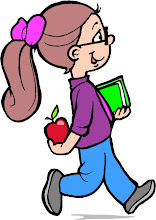We don't have school during the holiday season, but we love to decorate, bake, read, and watch videos. Every year we purchase one new Christmas book. On Christmas Eve we watch Pride and Prejudice (the BBC 5 hour version). Between each of the 6 episodes we do something, like make cookies, open presents, play a game, etc. This makes for a full and fun day!
Here is my list of favorite books to read for Christmas (in no particular order):
- The Legend of Saint Nicholas by Demi
- The Nutcracker by Alison Jay
- Christmas Tapestry by Patricia Polacco
- The Light at Tern Rock by Julia L. Sauer
- America's First Christmas by Hertha Pauli
- The Best Christmas Pageant Ever by Barbara Robinson
- Miracle in a Shoe Box by Franklin Graham
- The Christmas Stories of George MacDonald
- No Tree for Christmas by Marilyn Lashbrook
- Merry Christmas With Love by Sandi Patty
- Christmas in Happy Forest by Mary Hollingsworth
- Silent Night: A Mouse Tale by Betsy Hernandez and Donny Monk
- A Christmas Carol by Charles Dickens
- The Christmas Miracle of Jonathan Toomey by Susan Wojciechowski
- A Cup of Christmas Tea by Tom Hegg
- Christmas Stories from Grandma's Attic by Arleta Richardson
- All is Well: A Story for Christmas by Frank E. Peretti
- The Best Christmas Pageant Ever (with Loretta Swit)
- Silent Mouse (narrated by Lynn Redgrave)
- The Nutcracker




































